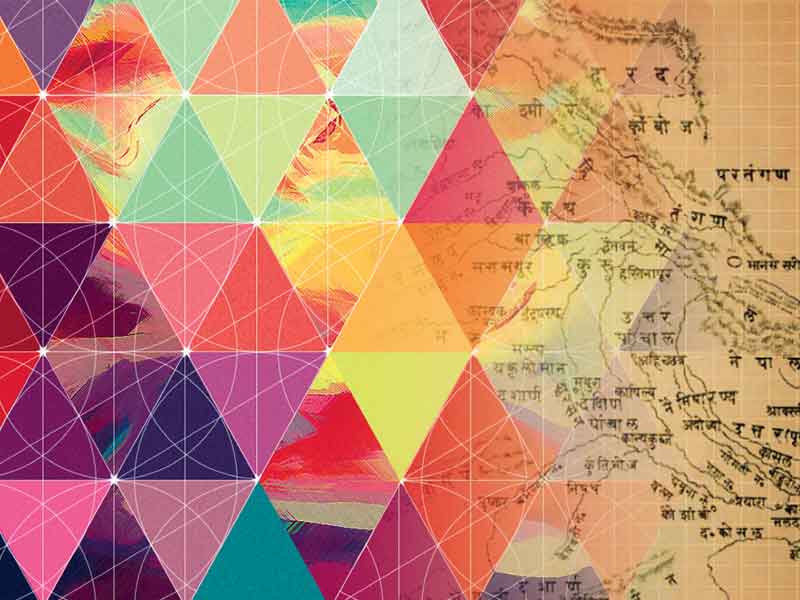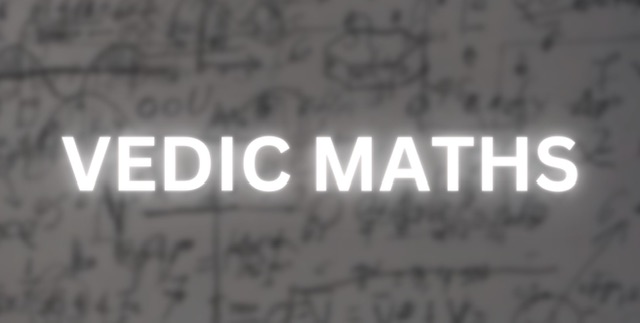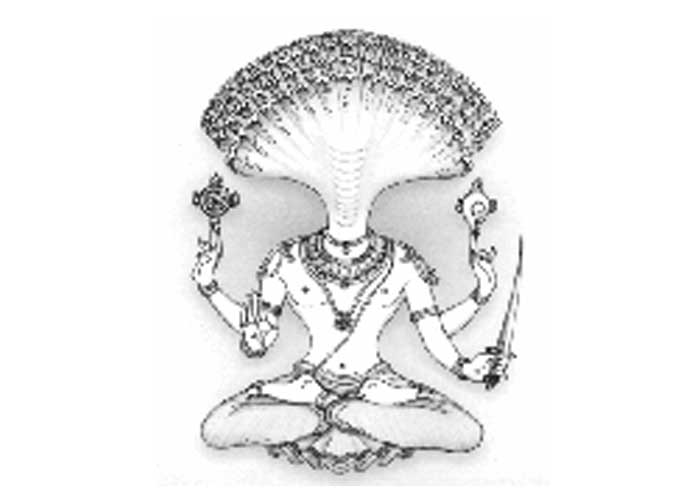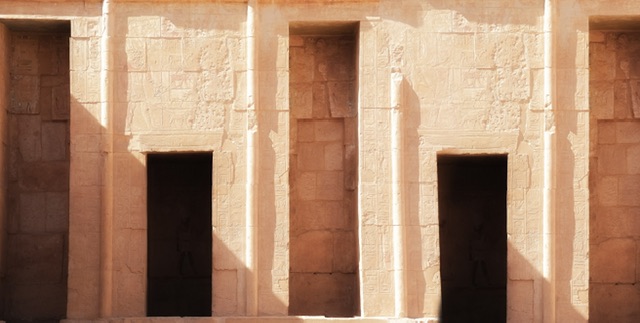In 1882, 70 kms from takshashila, near peshawar, in the village of bakshali was nearthed a 70-page manuscript written in sharda script and gatha dialect of prakrit on bhojpatras. the manuscript was dated back to the kushana period (about 200bc) and contained mathematical results of a high order including quadratic equations, finding square roots of imperfect squares, and arithmetic and geometric progressions.
Let us take a dip into the mathematical contributions of India spanning many millennia…
Have you heard of the Baudhayana Theorem? Maybe not. But all of you would have used it at some point in your life…
H2 = A2 + B2
Sounds familiar? The above formula featured in the Vedic Shulva Sutras (1000-800BC) much before it was reintroduced to us in the form of Pythagoras Theorem (500BC). The name Shulva Sutra itself means a treatise on measurements. In fact, since in ancient times ropes were used for measurement, the term ‘shulva’ later came to denote a rope!
दीर्घचतुरश्रस्याक्ष्णया रज्जु: पार्श्र्वमानी
तिर्यग्मानीचयत्पृथग्भूतेकुरूतस्तदुभयंकरोति॥
dīrghachatursrasyākṣaṇayārajjuḥpārśvamānī, tiryagmānī,
cha yatpṛthagbhūtekurutastadubhayāṅkaroti.
A rope stretched along the length of the diagonal produces an area which the vertical and horizontal sides make together. (Baudhayana Shulva Sutra)
The ideas presented in this collection seem to have been motivated by practical considerations for yagyas which provoked questions of measurement and hence geometry. The theorem was for the want of such an answer. As was, the solution to squaring a circle, that is, finding the size of a square whose area equals that of a given circle. As late as nineteenth century this problem was unsolvable by modern mathematicians because it involved irrational numbers. Good approximations of irrational numbers like π and root 2 were known to ancient Indian mathematicians.
samasyadvikaraṇī. pramāṇaṃtṛtīyenavardhayet
tac caturthenātmacatustriṃśonenasaviśeṣaḥ
The diagonal of a square. The measure is to be increased by a third and by a fourth decreased by the 34th. (Baudhayana i.61-2 (elaborated in Aapastamba Shulva Sutra i.6))
The Shulva Sutra gives the following approximation for root 2.
1 + 1/3 + 1/3*4 – 1/3*4*34
Other theorems include: diagonals of rectangle bisect each other, diagonals of rhombus bisect at right angles, area of a square formed by joining the middle points of a square is half of original, the midpoints of a rectangle joined forms a rhombus whose area is half the rectangle, etc.
The discovery acknowledged and ascribed to Vedas is that of zero and decimal system. Yajurveda Samhita, Taittriya Samhita, Vajasaneyi Samhita give large numbers in the decimal system as powers of ten, with the largest explicitly mentioned being 1019.
We now come to a later era, to the times of famous mathematician and astronomer Aryabhatta (500 -450BC) Aryabhatta, in his Aryabhatiya, gives a table of trigonometric sine functions, calling them jya in Sanskrit. The table gives the sines of angles at intervals of 3⁰45′. The mathematician Mahavira in the court of Karnataka Rashtrakuta King, Amoghavarsha Nrupatunga (AD 815-878) wrote Ganita Sara Sangraha, a superb text on advanced mathematical problems and results. He calculated the area of an ellipse, referred as ayatavritta, with major axis 2a and minor axis 2b as πab.
Cut to the times of 12th century mathematician Bhaskara II. In 1657, noted French mathematician Pierre de Fermat sought the solution to the equation
61X2 + 1 = Y2, where X and Y are integers.
It was in 1732 that mathematician Leonhard Euler solved it. Little did they know that the answer was found way back in 1150 by Bhaskara, who gave the smallest such solution as X = 22,61,53,980 and Y = 1,76,63,19,049. The method is called Chakravala method and is given in Bhaskara’s Siddhanta Shiromani. Another mathematical marvel by Bhaskara is the book of mathematical problems, Lilavati, which is addressed to his daughter by the same name. Lilavati brings mathematics to the routine life of a householder by presenting problems poetically and relating them to contemporary life. For example,
The square root of half the total number of a swarm of bees went to a Malati tree, followed by another eight ninth of the total. One bee was trapped inside a lotus flower, while his mate came humming in response to his call. O lady, tell me how many bees were there in all?
The problem can be solved algebraically, the solution being 72 bees in all.
Bhaskara seems to have been close to idea of calculus, writing formulae (similar to d sin x = cos x dx) that follow from differential calculus. He also seems to have known that derivative vanishes at maxima or minima of the function, again a concept from modern differential calculus (which came in mid-17th century).
“Almost exactly 1200 years ago, Abdullah Al Mansur, the second Abbasid Caliph celebrated the founding of his new capital, Baghdad, by inaugurating an international scientific conference. To this conference were invited Greek, Nestorian, Byzantine, Jewish as well as Hindu scholars….Al Mansur was interested in more accurate astronomical tables than available then.
He wanted, and he ordered at the conference, a better determination of the circumference of the Earth. No one realised it then but there was read at the conference a paper destined to change the whole course of mathematical thinking. This was the paper read by the Hindu astronomer, Kankah, on Hindu numerals, then unknown to anyone outside India…”





